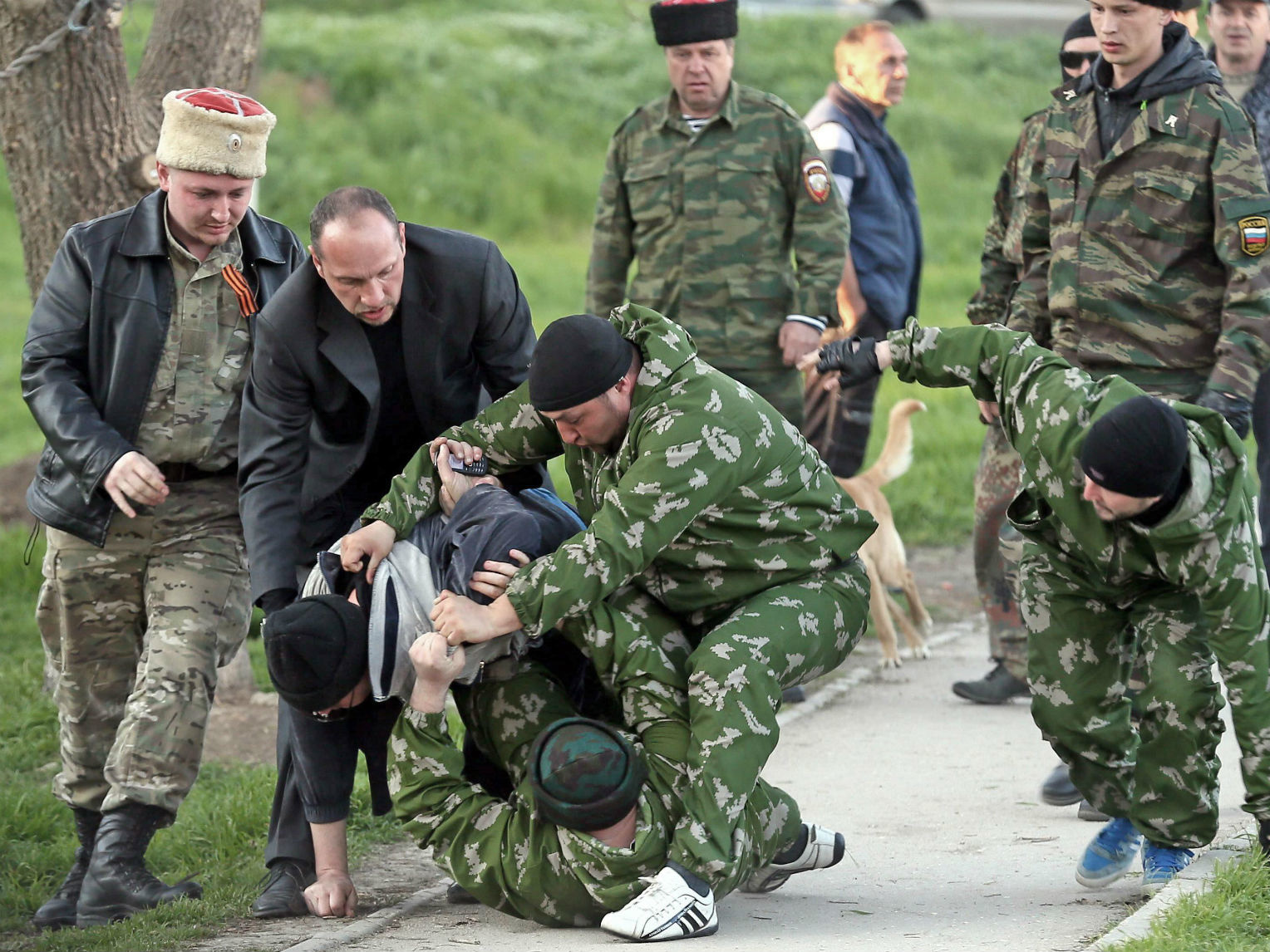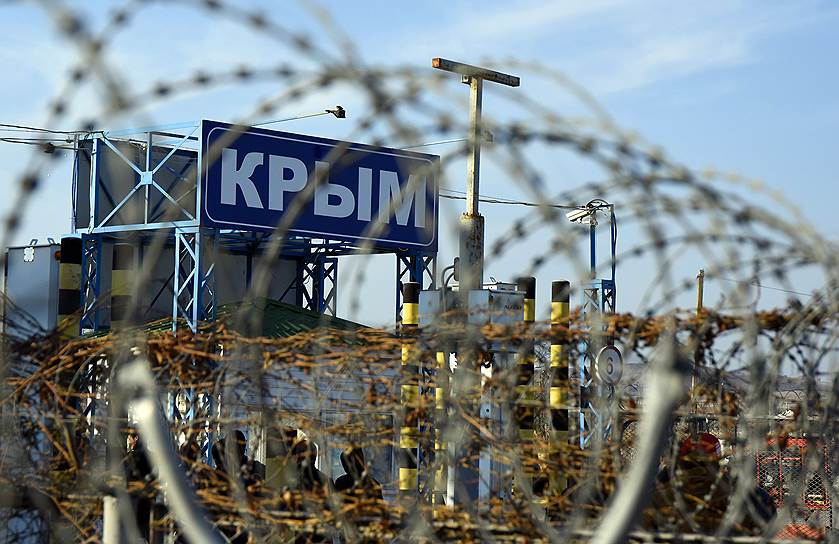Russian President Vladimir Putin’s Decree No. 201 came into effect on March 20, 2021. The executive edict adds Crimea and Sevastopol to “the list of Russia’s border territories where foreign citizens, stateless persons, and foreign legal entities cannot own land.” As such, non-Russians, including Ukrainian citizens who still reside in occupied Crimea but who refused to obtain a Russian passport, can now be stripped of their property. One year ago, Putin imposed a ban on land ownership in Crimea, thereby legitimizing the state’s appropriation of Ukrainian government assets and private property there. Foreign citizens legally had one year to sell or re-register their property based in Crimea; but Russia, under the pretext of anti-pandemic restrictions, significantly limited outside access to Crimea, especially for those trying to enter the peninsula from Ukraine (Krymr.com, March 11). Decree No. 201 is not only a violation of Ukrainian legislation (Crimea remains overwhelmingly recognized as de jure part of Ukraine) and international humanitarian law, but also represents another illegal step forward for Russia’s recolonization strategy in Crimea. The Russian authorities are trying to clear the occupied territory of “disloyal” residents and to erect a kind of “iron curtain” between Crimea and Ukraine.
Since 2014, Russia has been employing traditional Soviet resettlement practices and forcibly changing the demographic composition of the population in Crimea (see EDM, May 30, 2019 and August 6, 2019). The imposition of Russian Federation citizenship on residents of Crimea (nearly all residents of the peninsula had Russian citizenship less than a year after the annexation), forced deportations, the unlawful conscription of local men into the Russian military, persecutions and imprisonments of pro-Ukrainian activists who stand against the occupation, repressions against the Ukrainian Church, as well as closures of Ukrainian schools triggered a mass departure of Ukrainians (including Crimean Tatars) from Crimea. According to the Prosecutor General’s Office of Ukraine, almost 48,000 people left the peninsula for Ukraine during the last seven years (Krymr.com, January 6, 2021). The number of those who moved to other countries may be higher.
At the same time, Russia has been actively trying to increase the size of its “loyal” population by promoting and encouraging the in-migration of its citizens to Crimea. According to the Office of the Federal State Statistics Service in Crimea and Sevastopol, since 2014, 205,559 Russians moved to Crimea, of whom 88,445 settled in Sevastopol (Crimeahrg.org, January 6). As of January 2021, the population of Sevastopol was 513,149 (Goroda Rossii, accessed March 14). Ukrainian authorities from the Ministry of Reintegration of Temporarily Occupied Territories and representatives of the Crimean Human Rights Group believe the real figures of such new settlers are much greater (Informator.ua, January 6). A large number of military personnel, employees of the federal government, local and federal executive branch agencies (the Ministry of Internal Affairs, the Federal Security Service, the Investigative Committee, the Customs Service, prosecutor’s offices, the Border Service, the National Guard, the Tax Service, the Treasury, the Pension Fund), and members of their families are moving to Crimea without changing their permanent registration in Russian passports (because of the fear of being sanctioned), and thus they are not included in official statistics. Russian official statistics include only those who registered their place of residence in Crimea. The joint “Monitoring Group” of BlackSeaNews and the Black Sea Institute of Strategic Studies suggests that the real number of migrants who came to Crimea may be between 800,000 and 1 million people (BlackSeaNews, August 29, 2020). Refat Chubarov, a politician and leader of the Crimean Tatar national movement, stated a few years ago that during the period of annexation, new or expanded military towns appeared in Dzhankoi, Saki, Yevpatoria and Sevastopol (Radio Svoboda, May 28, 2018). According to Gayan Yuksel, a member of the Mejlis of the Crimean Tatar People, the Russian government launched a special resettlement program for siloviki (security services personnel). They reportedly receive a one-time payment of $30,000 to move their families to Crimea (Espreso.tv, March 17, 2019).
Additionally, Russian retirees from Moscow, the Far North, Siberia and other wealthy areas have been actively buying up real estate in Crimea. The Simferopol-based Russian National Commercial Bank considers Siberians a key target audience for the development of real estate mortgage programs in Crimea. The bank initiated a large-scale remote mortgage program in Siberia. Buyers from a major Siberian city of Krasnoyarsk will be able to make a real estate purchase in Crimea and obtain a mortgage remotely (Krymr.com, January 25, 2019).
Individuals from the so-called Luhansk and Donetsk “people’s republics” (LNR, DNR) have also contributed to migration flows into Crimea. Prior to the annexation, many Ukrainians from these eastern provinces had already invested in the Crimean real estate market. In Russian official statistics, they are presently indicated as “migrants from CIS [Commonwealth of Independent States] countries.” Moreover, most of them moved to Crimea during the first year of occupation and now have Russian passports. Consequently, it is difficult to adequately assess the scale of their migration (BlackSeaNews, August 29, 2020).
Migrant workers from the Caucasus, Central Asia and Upper (“Nagorno”) Karabakh are also not uncommon in Crimea. This diverse environment sometimes provokes ethnic tensions and conflicts on the peninsula. Reportedly, such migration flows led to the formation of ethnically based organized crime groups. In 2019, Russian police arrested a dozen Chechens, including Murad Saidov, the deputy permanent representative of Chechnya in Crimea. The detained men were suspected of extortion, kidnapping and involvement in a Chechen criminal group in Crimea. But Isa Khachukaev, Chechen governor Ramzan Kadyrov’s permanent envoy to the peninsula, and Kadyrov himself stood up for the apprehended Saidov (Lenta, February 7, 2019).
Since illegally annexing Ukraine’s Crimean Peninsula, Russia has been forcibly shifting the region’s demographic composition and trying to replace the native Crimean population with its own loyal citizens. Moreover, these transformative migration flows enable the occupying authorities to create a Trojan Horse against any future efforts by Kyiv to return the peninsula to its control. The saturation of Crimea with siloviki and military personnel is also done intentionally, helping further militarize the region and populate Crimea with trusted armed people. According to Article 49(6) of the Fourth Geneva Convention of 1949 and Article 8(2)(b)(viii) of the Statute of the International Criminal Court (ICC), “the transfer, directly or indirectly, by the Occupying Power of parts of its own civilian population into the territory it occupies” is completely prohibited and considered a war crime (Crimeahrg.org, January 6).
Read More:
- The quiet front: the battle of identities in occupied Crimea and Donbas
- Between occupation and annexation: finding the proper way to call Ukrainian Crimea
- Crimea. Dehydration: A film exposing Russia’s colonial policy and the desiccation of the occupied peninsula
- Grasping at straws: how the pro-Kremlin media tried to legitimize the illegal annexation of Crimea
- Crimean Platform sets the scene for deoccupation, all UN members should join – Ukrainian expert at UNSC
- Russia comes for Crimean Tatars in occupied Crimea once again
- Ukraine’s evidence in ECtHR: proof of Russia’s occupation of Crimea, human rights violations
- The myth of “historically Russian Crimea”: colonialism, deconstructed
- Stolen childhood: Russian propaganda and militarization of Crimean youth
- 76 years after deportation, Crimean Tatars are again being erased from history in Crimea
- 7 myths driving Russia’s assault against the Crimean Tatars
- Why the Kremlin fears the Mejlis of the Crimean Tatars




